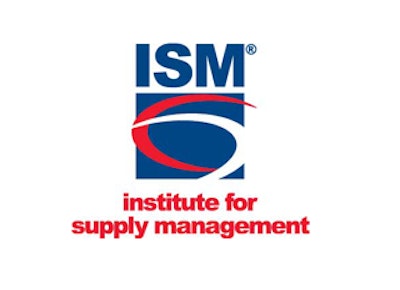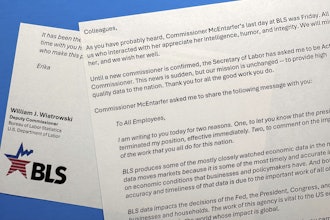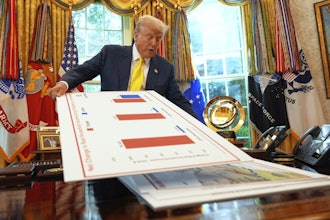
While overall economy grew for the 37th consecutive month, economic activity in the manufacturing sector contracted in June for the first time since July of 2009, according to the June Manufacturing ISM Report on Business.
Whether this month’s uncharacteristically disconcerting report is an anomaly or the start of an actual trend remains to be seen. There’s simply not enough data to make many definitive conclusions, says Bradley J. Holcomb, CPSM, CPSD, chair of the Institute for Supply Management Manufacturing Business Survey Committee.
“I don’t get excited over one month’s data. We obviously look for trends, and I’ll be just as anxious as anyone else to see what happens next month,” says Holcomb.
PMI
Much of the concern regarding this month’s report revolves around the PMI, which registered 49.7 percent. This is down 3.8 percentage points when compared to May’s reading of 53.5 percent. A PMI in excess of 42.6 percent, over a period of time, generally indicates an expansion of the overall economy. A reading above 50 percent indicates the manufacturing economy is generally expanding, while a reading below 50 percent means it is generally contracting.
June marked the first time the PMI dipped below 50 percent since July of 2009, when it registered 49.2 percent.
“You kind of ask yourself ‘What’s going on there?” says Holcomb, referring to the PMI. “And there are no clear answers.”
However, he noted the PMI for June (if annualized) corresponded to a 2.4 percent increase in real gross domestic product annually.
Inventories
The ISM Inventories Index continues to drop each and every month, as it registered 44.0 in June. This is two pointers lower than the 46.0 reported in May. According to Holcomb, this has had a significant and negative effect on the PMI.
“It’s actually the inventories number that’s holding down the PMI more than any other factor,” says Holcomb. “But we could easily see that inventories number jump up next month for a variety of reasons, one of which is the prices of raw materials to support inventories is at its lowest in quite a long time as well.”
Prices
Indeed, prices of raw materials continue to drop. ISM’s Prices Index registered 37 percent in June, which is a decrease of 10.5 percentage points when compared to the May reading of 47.5 percent. The index registered exactly 61.0 percent in both March and April. June saw the lowest ISM Prices Index reading since April of 2009, when the index registered 32 percent.
According to Holcomb, that’s a positive sign for manufacturing and the overall economy. It’s also one reason to think next month’s report may look a little more promising.
“That’s definitely good news for inventory rebuilding and for the health of manufacturing overall,” he adds.
New Orders and Exports
However, a pair of important indexes indicated contraction this month, leading to further concern about the current state of manufacturing. ISM’s New Orders Index fell 12.3 percentage points from May to June. The June index registered 47.8 percentage points, the first time there has been a contraction in new orders since April of 2009. Furthermore, ISM’s New Exports Index stands at 47.5 in June, the first time it has shown contraction in the index since June of 2009.
Holcomb suggests concerns regarding the ongoing uncertainty surrounding the global economy may be weighing heavily on the manufacturing industry.
“It’s translating into lower new orders, of which exports are a component,” he says
Employment
Meanwhile, the ISM Employment Index pretty was stable in June. It registered 56.6 percent in June, down just 0.3 percentage points lower than the 56.9 percent reported in May.
“It’s a strong number, as companies are saying they will continue to hire people,” says Holcomb. “They don’t do that unless they are also reasonably optimistic about the future.”
According to Holcomb, the PMI over the past three business cycles, there have been some downward trends and disconcerting statistics. However, the economic recovery has forged ahead and manufacturing has shown growth and promise. As a result, he is quick to warn those who suggest this month’s report is definitive evidence of a downward trend in manufacturing.
“This is definitely something to not be concerned about,” says Holcomb. “We have every reason to be as optimistic as not.”
In his role as the Chair of the Institute for Supply Management Manufacturing Business Survey Committee, Bradley J. Holcomb writes the monthly Manufacturing ISM Report on Business based on the survey results of approximately 350 professionals across 18 different industry sectors. The Report on Business is released on the first business day of each month, and features the PMI Index as its key measure. For more information on the Institute of Supply Management, visit www.ism.ws.























